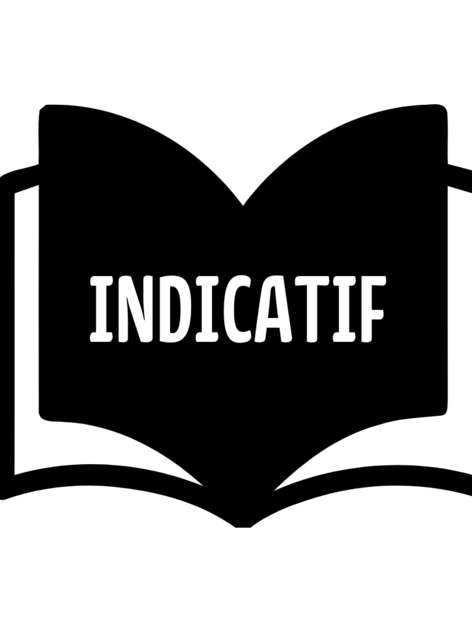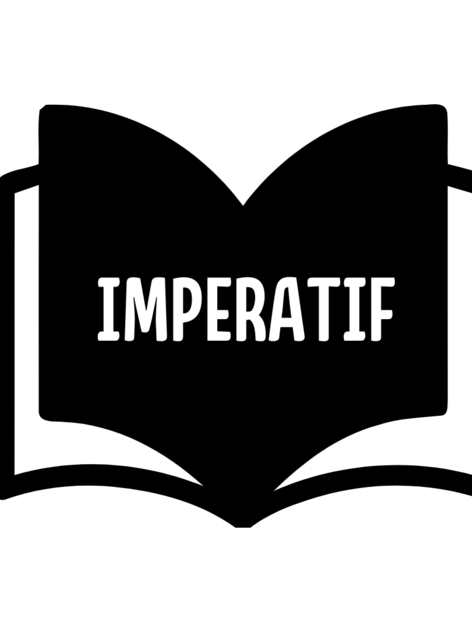Understanding French grammar
The French language has many subtleties that make it one of the most difficult languages for foreigners to learn. French grammar can be complex, requiring concentration and diligence. Below, we offer a brief overview of the key elements of French grammar. These explanations should help you gain a better grasp of French grammar and develop a simplified learning plan.
Together, we'll explore all the components of the French language, with particular emphasis on verb tenses, a crucial branch of French grammar. It is therefore essential to devote particular attention to this aspect.
Understanding the basics of French grammar
To better understand the rules of French grammar, it's important to know a few basic grammatical terms. Knowing these terms will help you follow the explanations and apply the rules. That's why we recommend that you understand the terms and their meanings using the corresponding grammatical classes. We'll show you the 9 grammatical classes of French words you'll need to master French grammar.
Click here to find out more about grammatical classes in French »
The use of determiners in French
In French, the determiner is used to introduce a noun; together they form a nominal group (with or without an adjective). Its use is almost always mandatory in front of a common noun.
We can see different types of determiner in French sentences.
Click here to find out more about the different determinants in French»
The use of pronouns in French
Pronouns are words that replace a (group of) noun(s), a proposition, an infinitive or an adjective. They are generally placed before conjugated verbs. In French, we have eight categories of pronouns.
Click here to find out more about the different pronouns in French »
The use of adjectives in French
The adjective is a word that characterizes a noun (object or person). It is placed either after the verb, in front of or behind the noun it characterizes. It gives information about the word it accompanies and agrees in gender and number with it.
Click here to find out more about the different adjectives in French »
The use of adverbs in French
Adverbs are invariable words that change the meaning of words or a sentence. There is no specific place in the sentence for adverbs.
Click here to find out more about the different adverbs in French »
Mastering French conjugation tenses
French verb tenses can be a challenge for learners, as there is a wide variety of different forms and usages. To understand the tenses of French grammar, it's important to take a systematic approach and examine each tense individually.
A good starting point is to familiarize yourself with the basic tenses. The French language has several basic tenses, including present simple, past simple, present continuous, past continuous, present perfect, past perfect, future simple and future perfect. Each tense has its own rules and usages that it's essential to understand.
Understanding the rules and usages can be arduous, but with practice and patience, you can develop a good command of French verb tenses. Regular conversation with native speakers or reading French texts can help to familiarize yourself with the different nuances of tenses.
To understand the rules of French tenses, you need to have a good understanding of French grammar, in particular verbs and their conjugation. To help you, we've explained all the tenses of the French language, themselves divided into different modes. Check out the different modes below and learn and understand the French tenses.
The 4 modes of the French language
Sentence structure in French
French grammar follows very specific rules and patterns when it comes to sentence structure. You need to familiarize yourself with these.
So that you can formulate sentences in French without making mistakes, we explain below how to apply grammar correctly and how to formulate good sentences in the French language. In French, a sentence is made up of a coherent set of words with a meaning, called a proposition. A sentence can contain one or more propositions. Each proposition that makes up a sentence is made up of several groups of words, including a subject, a verb, a complement and sometimes an attribute.
Example of a sentence in French
Let's take a simple example of a sentence in French: "Je pense que ma soeur a une belle chevelure."
This sentence is made up of two propositions. The first, "je crois" (I believe), is made up of a subject "je" and a verb "croire" (to believe), which is conjugated. Within the second proposition, "that my sister has a beautiful head of hair", we can distinguish a subject "my sister", a verb "to have" which is conjugated, and a complement "a beautiful head of hair".
Sometimes, words can be implied in a sentence. For example, "François speaks like his father" implies "François speaks like his father spoke". This is called an ellipsis.
There are 4 main types of sentence: First, the declarative sentence, which can be either affirmative (such as: "Lucie has finished her homework") or negative (such as: "Lucie has not finished her homework"). Second, the interrogative sentence, which can be direct (e.g. "Has Lucie done her homework?") or indirect (e.g. "I wonder if Lucie has done her homework"). Thirdly, the exclamatory phrase such as: "Lucie has finished her homework!" and finally, the imperative phrase such as: "Finish your homework".
Agreeing a noun after a number
In the French language, the singular is used when referring to an entity less than 2. The plural starts from 2. Here are two examples to illustrate this grammatical rule:
- I visited 3 French cities.
In this example, we add an "s" to "city" because the number 3 is greater than 2.
- This morning, I walked 1.3 kilometers.
However, in this sentence, the noun "kilometer" remains in the singular, since 1.3 is less than 2.
Distinguish between the verbs to be and to have
The verb "to be" is generally used to express a state, attitude or action, while the verb "to have" is commonly used to express possession.
To be: "You're very pretty" or "I'm a bit stressed today".
To have: "He has an automatic car" or "I have a headache".
The interrogative sentence in French
It's important to know the basic rules and structures used to form questions in the French language. Here are the main points to bear in mind when formulating a question in French. We'll explain them below.
Use French interrogative words
The French language has several interrogative words with which questions generally begin. Depending on the interrogative word, different information is requested. See the table below:
| Mot interrogatif | Usage | Example |
| qui |
|
|
| à qui |
|
|
| que/qu' |
|
|
| quoi |
| Quoi dire ? What can I say? |
à quoi, de quoi, avec quoi, sur quoi...etc. |
|
|
| où |
|
|
| d'où |
|
|
| quand |
|
|
| comment |
|
|
| pourquoi |
|
|
| quel/quelle/quels/quelles |
| Quelle robe vas-tu choisir ? Which dress will you choose? |
| lequel/laquelle/lesquels/lesquelles |
| Voici 3 robes. Laquelle préfères-tu ? Here are 3 dresses. Which do you like best? |
| combien |
| Combien de frères et soeurs as-tu? How many brothers and sisters do you have? |
Other forms of interrogative sentences
Question with rising intonation: This is probably the simplest form of interrogative sentence. It's used in colloquial language. The sentence structure is the same as for an affirmative sentence, only the intonation of the voice changes. Example: Are you going to the library?
Question with "est-ce que": Questions with "est-ce que" are often used in everyday language, either to formulate a partial interrogation, with an interrogative word (e.g.: Who are you having lunch with?) or to formulate a total interrgoation, without an interrogative word (e.g.: Can I put on this dress?).
Questions with modal verbs
In French, questions are also often formed using modal verbs.
When modal verbs such as "pouvoir", "devoir" or "falloir" are used, the modal verb is placed directly in front of the subject. Here are two examples of questions with modal verbs: "Can you help me?" and "Should I call the doctor?
The use of auxiliary verbs
In French, questions are often formed using auxiliary verbs. Here again are two examples of questions that use auxiliary verbs to form the question: "Have you received my application?" and "Are you available this weekend?".
The passive voice
The passive voice indicates that the subject undergoes the action. Several things change when we switch from active to passive voice: the verb becomes the passive (être + the past participle of the verb), the COD becomes the subject and the subject becomes the agent complement. The verb to be in the passive sentence is conjugated in the same tense as the main verb in the active sentence.
Examples: My sister invited some friends over on Friday.
Some friends were invited by my sister on Saturday.
As we can see in this example, the past participle with the auxiliary to be agrees in gender and number with its new subject.
When the active sentence is transformed into the passive voice, the subject becomes an agent complement. In most cases, this is introduced by the preposition par, and sometimes by de.
Examples: Everyone likes him.
He is appreciated (by all).
The agent complement is not always expressed, especially when it's: tous, tout le monde and on. When the agent complement is not expressed, the past participle can be considered an adjective.
Improve your French grammar on a language trip
Would you like to improve your French? Then start your unforgettable language trip to the French-speaking country of your choosing right now!
The basic rules of comma placement in French grammar
In French grammar, commas can sometimes be confusing and difficult to understand. That's why it's a good idea to remember a few basic rules about comma placement in French. These will help you find the right place for the comma in your sentences. The following overview gives you an idea of the basic rules of comma placement in French.
Commas between two main sentences
There must always be a comma between two main clauses. A main clause can be recognized by the fact that the sentence can also stand on its own without losing its meaning. If two main clauses are connected to one, a comma must be placed between the two main clauses. The following example illustrates this.
Example sentence: Linda went to Malta and used her summer to learn English.
Comma placement in sentence insertions and subordinate clauses
If you include an insertion or subordinate clause in your French sentence, you must place a comma before the insertion or subordinate clause. You can recognize a subordinate clause by the fact that the main clause makes sense without the information mentioned in the subordinate clause or insertion. Here's an example of the comma rule.
Example: Linda, who spent her vacations in Malta, has improved her English considerably.
Comma settings for bulleted lists
When more than two adjectives or three or more main clauses, phrases or words follow each other, a comma is placed. For a better understanding, take a look at the following example of comma placement in bulleted lists.
Example sentence: He packed his suitcase, went to the airport and flew to Malta.
Discover all options to learn French abroad













